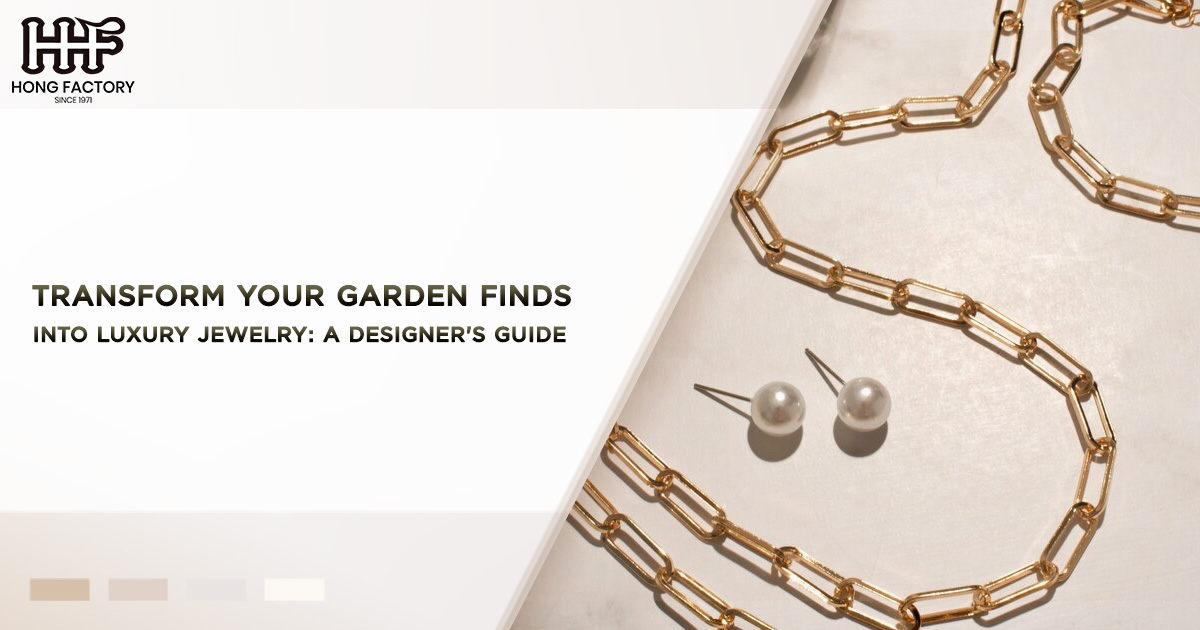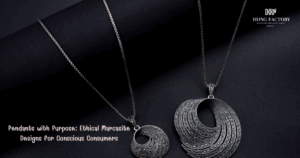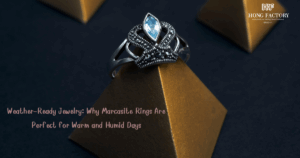Nature is one of the most powerful sources of inspiration for creativity, and jewelry design is no exception. With a little ingenuity, you can transform the humble treasures of your garden—leaves, flowers, twigs, seeds, and even stones—into breathtaking, one-of-a-kind luxury jewelry. This article serves as a comprehensive, tutorial-style guide to creating stunning botanical jewelry using natural materials. Whether you’re a seasoned jewelry designer or a curious beginner, this step-by-step guide will empower you to craft pieces that celebrate the beauty of the natural world.
Gathering Inspiration and Materials
The magic of turning natural materials into jewelry begins with knowing where to look. Your garden, local parks, or nearby nature trails are perfect places to find inspiration and materials for your DIY jewelry projects.
1. Understanding Botanical Jewelry
Botanical jewelry is a style of adornment that incorporates natural materials or elements inspired by nature. Instead of relying solely on synthetic or precious metals and stones, this style highlights organic forms, textures, and colors. The goal is to capture the delicate beauty of nature’s creations and turn them into wearable art.
2. What to Look For in Your Garden
When collecting materials, focus on items that are both visually interesting and durable. Here are some ideas –
– Leaves – Look for leaves with defined veins, interesting shapes, or unique patterns. Eucalyptus, ferns, and maple leaves are popular choices.
– Flowers – Choose small or hardy blooms like daisies, lavender, or baby’s breath. Dried flowers work especially well for jewelry.
– Seeds and Pods – Acorns, pinecones, and seed pods can add texture and volume to your designs.
– Twigs and Branches – Thin, flexible twigs can act as frames or accents in your pieces.
– Stones and Pebbles – Smooth, polished stones can be transformed into pendants or beads.
3. Preparing Natural Materials
Before diving into the creative process, it’s essential to properly prepare your garden finds. Follow these steps
- Clean Thoroughly – Remove dirt, bugs, and debris by rinsing your materials in water. For delicate items like flowers, use a soft brush or cloth.
- Dry and Preserve – Natural materials can decay over time, so it’s crucial to dry them properly. Press flowers in a book or use silica gel for faster results. Twigs and leaves can be air-dried or preserved with a clear spray varnish.
- Seal for Durability – Coat items like leaves, flowers, and twigs with resin, clear nail polish, or a jewelry-grade sealant for added strength and longevity.
Tools and Techniques for Crafting Botanical Jewelry
Creating botanical jewelry combines traditional jewelry-making techniques with a creative twist. Here’s an overview of the tools and methods you’ll need to succeed.
Essential Tools for DIY Jewelry
Invest in quality tools to make the crafting process smoother and more precise. Here are the basics –
– Jewelry Pliers – Round-nose, flat-nose, and wire cutters are essential for shaping and attaching metal findings.
– Beading Tools – A bead reamer, tweezers, and a bead mat will help with assembling smaller components.
– Resin Kit – For preserving delicate materials, you’ll need epoxy resin, a mixing cup, and a mold.
– Drill or Dremel Tool – Useful for creating holes in stones, shells, or other hard materials.
– Glue and Adhesives – Jewelry-grade glue or epoxy ensures a strong bond for attaching components.
Techniques for Incorporating Natural Materials
Here are some beginner-friendly techniques to transform your garden finds into jewelry –
– Resin Coating – Encapsulate leaves, flowers, or seeds in clear resin to preserve their natural beauty. Resin molds can create pendants, earrings, or charms.
– Wire Wrapping – Use thin, flexible wire to secure stones, twigs, or leaves into unique shapes. Wire wrapping adds an elegant, handmade touch to your designs.
– Beading – Drill holes in seeds, pebbles, or pods to create beads for necklaces or bracelets. Combine them with metal or glass beads for added flair.
– Metallic Accents – Experiment with metallic paints, gilding, or electroforming (a process that plates natural objects with metal) to elevate the look of your jewelry.
Step-by-Step Tutorial – Creating a Botanical Pendant Necklace
Now that you’ve gathered your materials and tools, let’s dive into a specific project – a botanical pendant necklace. This piece highlights the beauty of a single leaf encased in resin and framed with wire.
Materials Needed
– A small, flat leaf (e.g., fern or eucalyptus)
– Epoxy resin and a silicone mold (pendant shape)
– Jewelry wire (20-gauge)
– Chain or cord for the necklace
– Jewelry findings (jump rings, clasp)
– Pliers and wire cutters
– Sandpaper (optional)
Step-by-Step Instructions
- Prepare the Leaf – Ensure the leaf is clean, dry, and pressed flat. Seal it with a thin layer of resin or varnish to prevent discoloration.
- Mix and Pour Resin – Follow the instructions on your resin kit. Mix equal parts resin and hardener, then pour a thin layer into the mold. Place the leaf on top and gently press it down with a toothpick. Add another layer of resin to fully encapsulate the leaf.
- Cure the Resin – Allow the resin to cure according to the manufacturer’s instructions. This usually takes 24–48 hours. Once hardened, remove the pendant from the mold.
- Sand the Edges – If the edges of the pendant are rough, use fine-grit sandpaper to smooth them out.
- Add Wire Wrapping – Cut a 6-inch piece of jewelry wire. Wrap the wire around the top of the pendant, creating a loop for the chain. Use pliers to secure the wrapping.
- Assemble the Necklace – Attach a jump ring to the pendant loop, then thread the chain or cord through the jump ring. Add a clasp to complete the necklace.
Creative Design Tips for Luxury Botanical Jewelry
Elevating your botanical jewelry from simple DIY projects to luxury pieces requires attention to detail, creativity, and a touch of sophistication. Here are some design tips to make your jewelry stand out.
Embrace Minimalism
Sometimes, less is more. Highlight the natural beauty of your materials by keeping your designs clean and simple. A single resin-encased leaf or a polished stone on a delicate gold chain can be incredibly elegant.
Play With Color and Texture
Combine natural materials with contrasting elements to create visual interest. For example –
– Pair rustic twigs with sparkling gemstones.
– Use brightly colored beads to accentuate neutral-toned seeds or pods.
– Add metallic highlights with gold or silver leaf.
Mix and Match Materials
Blend organic and man-made materials to create unique combinations. Try pairing natural elements like flowers and stones with pearls, crystals, or metal charms.
Personalize Your Designs
Make your jewelry meaningful by incorporating sentimental elements. Use flowers from a special occasion or stones from a memorable location to create a piece with emotional value.
Caring for Your Botanical Jewelry
To ensure your botanical jewelry remains beautiful and durable, proper care is essential. Follow these tips –
– Avoid Moisture – Keep your pieces dry, as water can weaken adhesives and damage natural materials.
– Store Safely – Store your jewelry in a cool, dry place, preferably in a jewelry box or pouch to prevent dust and scratches.
– Clean Gently – Use a soft cloth to clean your jewelry. Avoid harsh chemicals or abrasive materials.
Conclusion
Transforming your garden finds into luxury jewelry is a rewarding way to celebrate the beauty of nature while expressing your creativity. By combining natural materials with thoughtful design and careful craftsmanship, you can create stunning botanical jewelry that’s both unique and meaningful. Whether you’re crafting for yourself, gifting a loved one, or starting a small business, this guide provides everything you need to get started. So head to your garden, gather some inspiration, and begin your journey into the world of DIY botanical jewelry!




